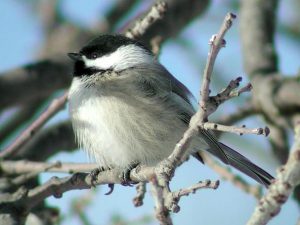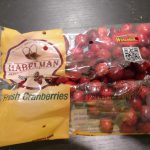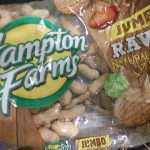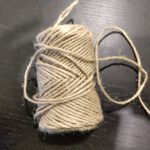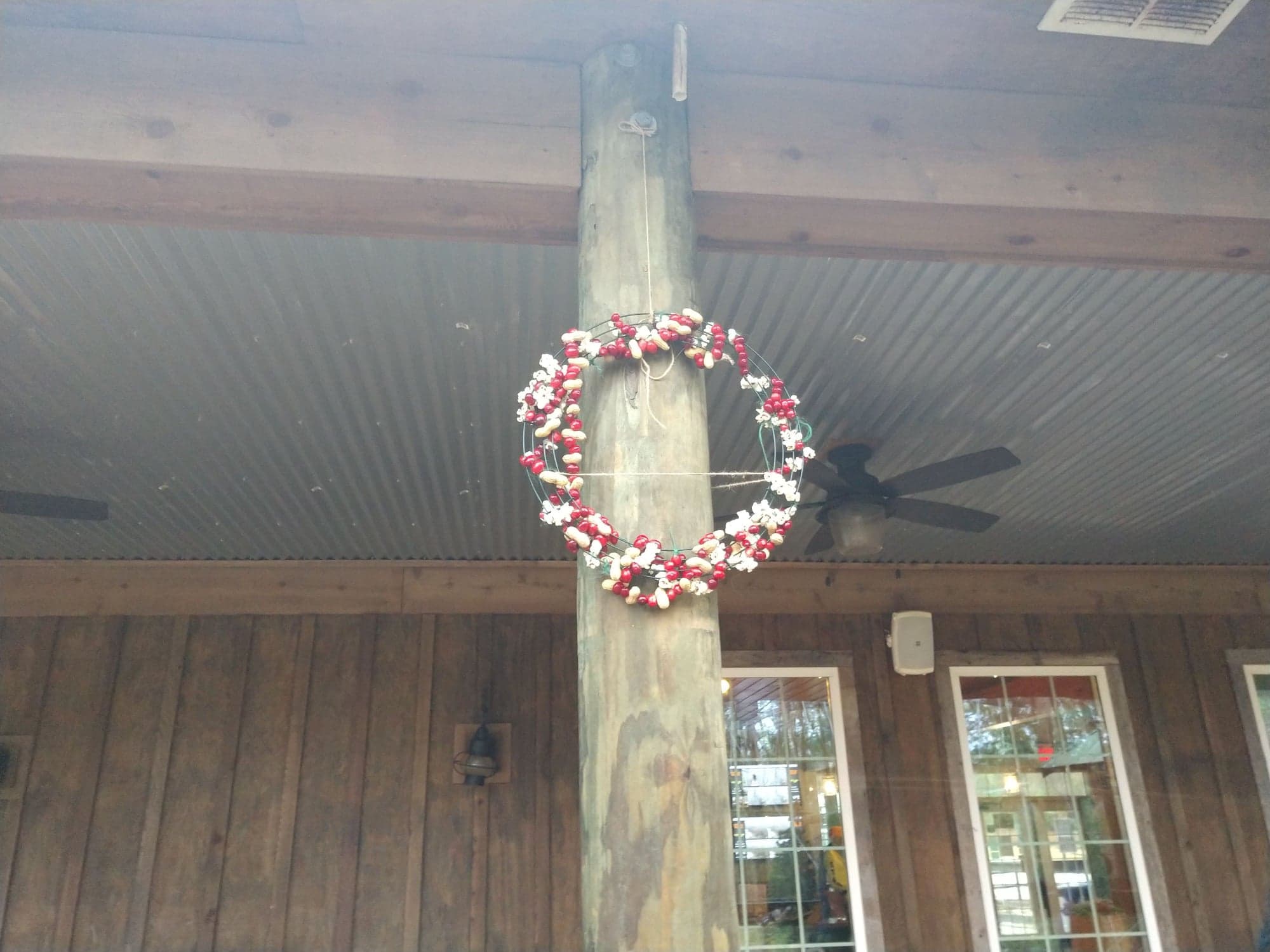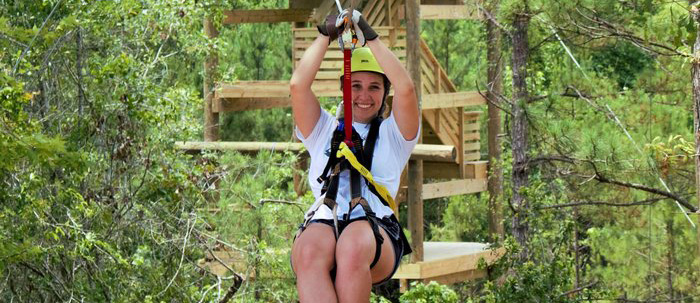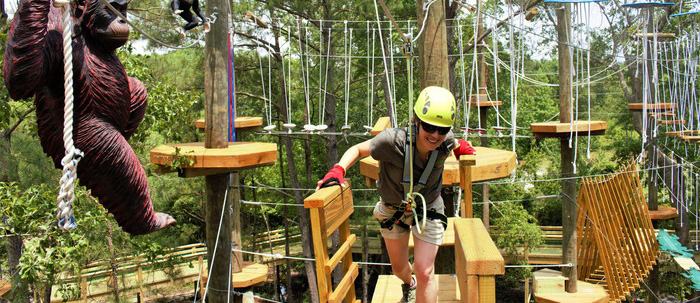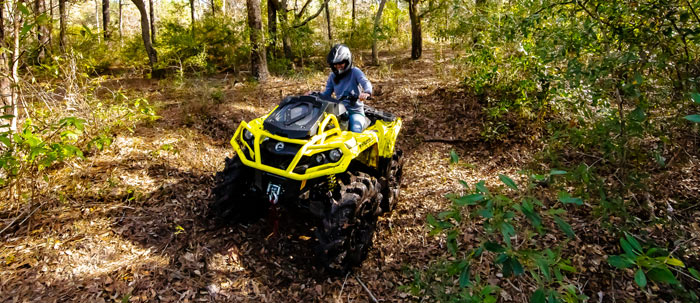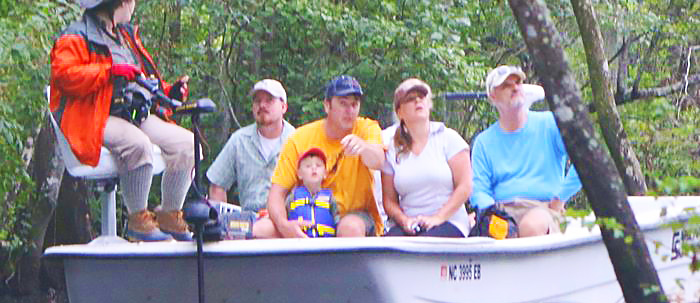Welcome back, Folks! This week we will be finishing our 2 part series about backyard birds and their adaptation to winter on the East coast. Plus learn how to make a Feeding Garland for your woodland friends.
As we discussed before, migration for many animals is a dangerous trek. Often times juvenile or sickly animals do not make it to their destination. Instead, the majority of the animals will stay in their surrounding area and will hibernate (mammals), brumate (reptiles), or adapt (some mammals and birds). Backyard birds have evolved with amazing abilities to keep themselves home all year round, let’s explore their physical and behavioral adaptations.

Future of Animal Migration. Credits: Nature Conservancy
Have you ever worn a down jacket before? If you have then you know those jackets will keep you quite warm. Just like the downy jacket birds will use their feathers as a coat for themselves. For example, often times you’ll see Cardinals turn into red puff balls on extremely cold days. By puffing themselves up it creates space between their feathers and skin which allow them to trap their body heat. Some birds produce oil from their “uropygial gland” to waterproof their feathers.
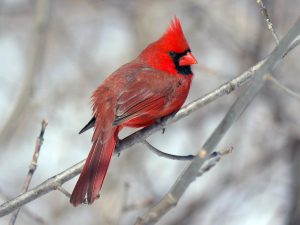
Male Cardinal using feather jacket. Credits: All about Birds
But what about their feet? Birds have scaly feet to help reduce body heat loss. Plus they have the amazing ability to regulate their legs and feet temperature separately from their bodies. They do this by constricting their blood vessels in their legs to minimize the need for heat in their feet. Birds will tuck their feet underneath their fluffy bodies on extremely cold weather. I guarantee you’ll see these birds sunning themselves on a warm morning.
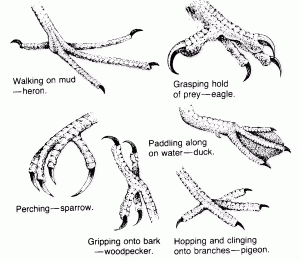
Bird Feet Identification. Credits:Mayeriment Gardens
During the winter days, it is essential for our backyard friends to acquire as much food as they can. It takes a lot of energy for birds to maintain their core temperature, especially once the sun goes down. Some birds can build a small fat reserve for insulation and energy. Chickadees will have up to 10 percent of their winter body weight in fatty storage. They build up their insulation by feasting during the autumn, humans aren’t the only ones who will gorge themselves during the fall season.
This is the best time for you to put out bird seed and fill your birdbath for amazing sightings and help your local feathered friends. Feed your aviary friends sunflower seeds, peanuts, popcorn, berries, and dried fruits. Be aware you might attract some furry squirrels or impish chipmunks looking for a fat filled breakfast. One fun way to decorate your trees and feed the neighborhood wildlife is by creating a Feeding Garland. Follow these simple steps.
Feeding Garland
Est time: 30-45 mins Prep Time: 5 mins
Ingredients/Supplies
- Unflavored Popcorn *Do Not use butter flavored or salty popcorn. Plain popcorn kernels are best for our little friends.*
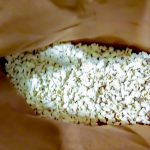
- Scissors
- Large sewing needles
Instructions
- Put cranberries, peanuts, and popcorn in 3 separate bowls. Arrange bowls so they are accessible for everyone.
- Measure hemp string or the fishing wire to whatever length you like. Then cut the string at the desired length. Suggestion: 2 arm lengths.
- Take one end and tie a simple knot. Thread the other end with a needle. * Make a small loop, leaving a tail. Pull the tail thru the loop and firmly secure the knot. *
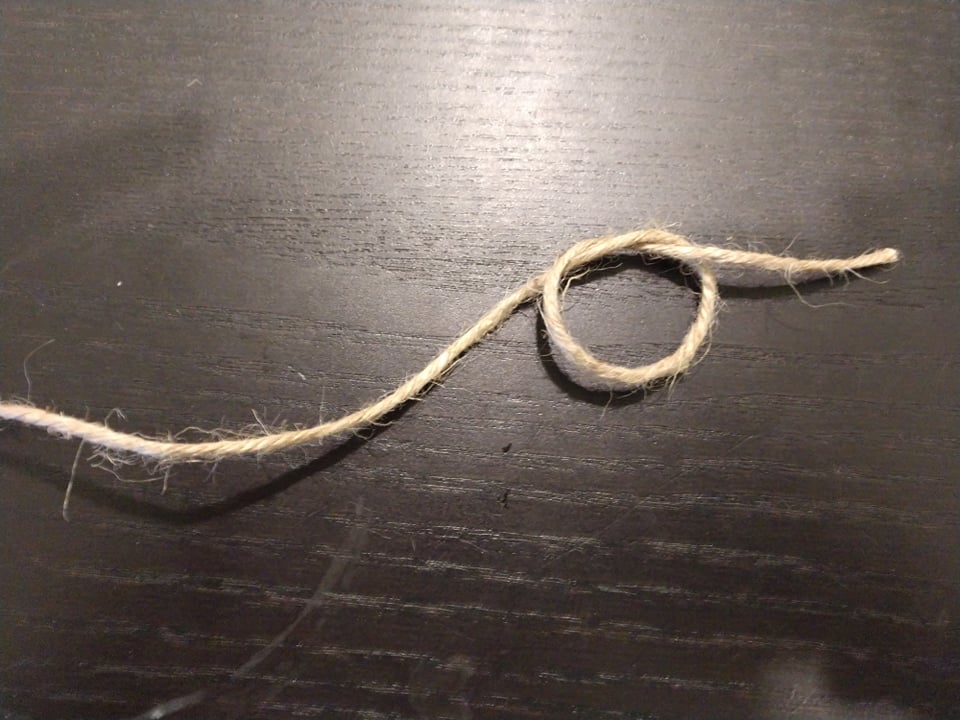

- It does not matter what order you go in. Take a treat and pierce it with the needle. Push food onto the string and pull thru toward the end with the knot. Be careful piercing treats or you will prick yourself. Try piercing the food in the center to prevent them from falling off the string too easily. Repeat process until you fill the string with goodies. Suggested sequence of treats: Cranberry, peanut, popcorn
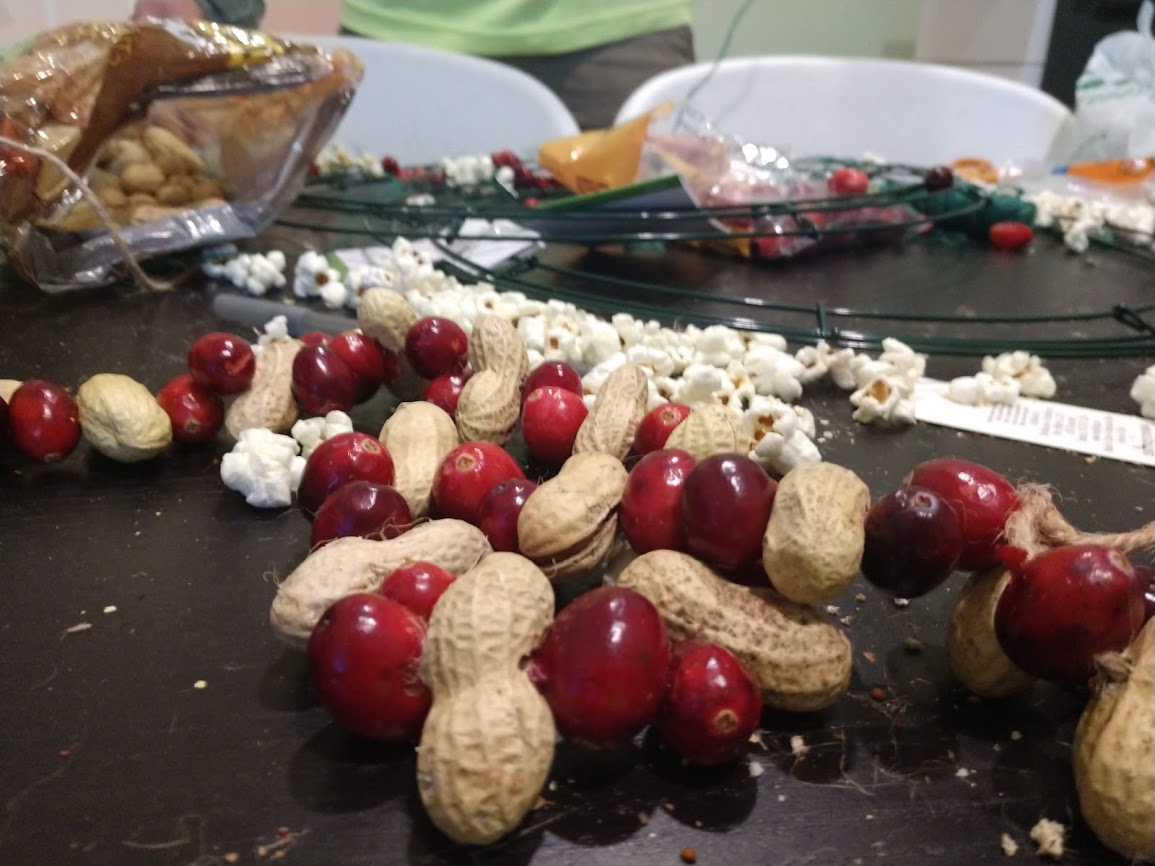
- Leave enough room to be able to create a knot and remove needle. Tie a simple knot at the end.
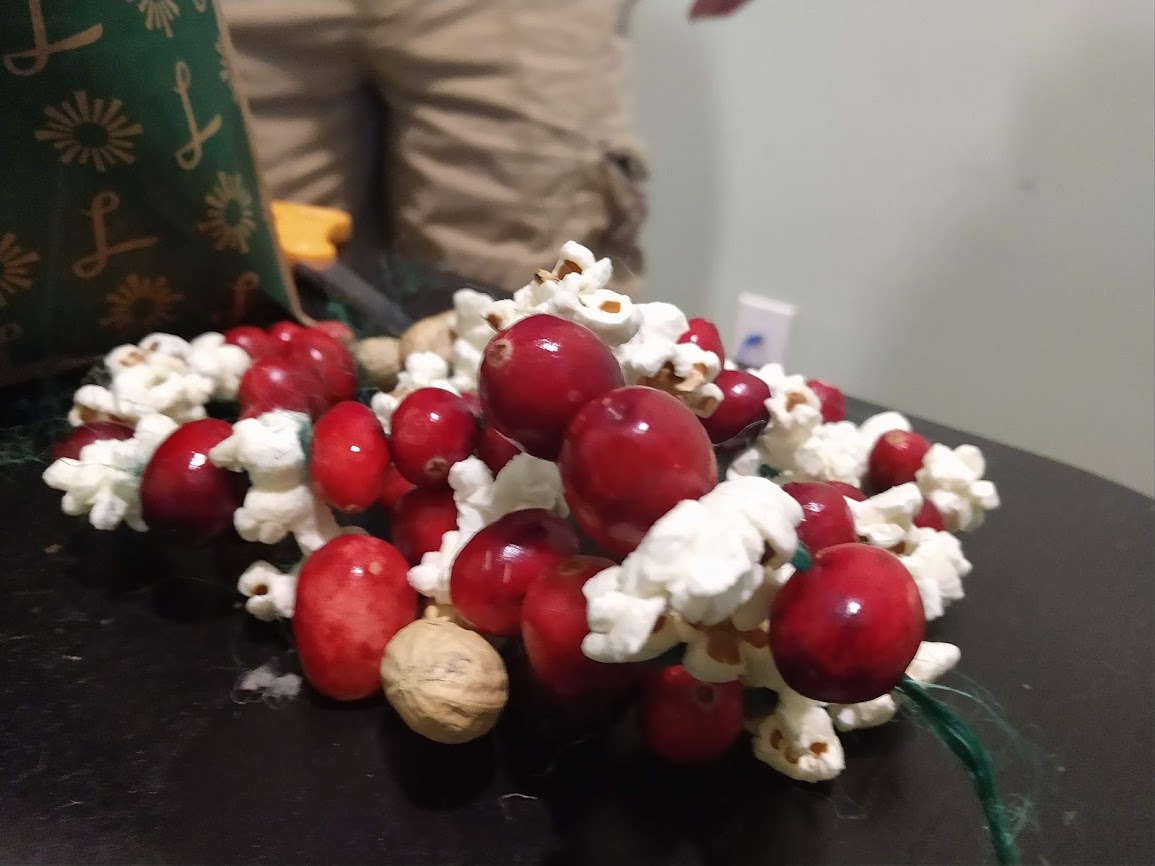
- Go outside and string the garland around your favorite tree. If you have a wreath frame then string the garland around the frame. Hang wreath on a door or tree. Make sure the placement of food is not too near windows or reflective surfaces. Leave a bowl of warm water nearby, so our friends can have something to drink.
Check out additional information from experts about our backyard birds survival skills. If you have any questions or concerns follow the links here to ourFacebook, Tumbler, Twitter, or Instagram page and we’ll answer! Check out next month’s blog as we discussGeorge Washington and his visit to NC. Visit our other blogs for Part 1 of this blog and about our wetlandreptiles amazing winter adaptation.
Sources:
- https://journeynorth.org/tm/spring/FebChicadees.html.
- “Bird Identification.” August 26, 2013. https://mayerimentgardens.wordpress.com/birds-2/bird-identification/.
- “Black-capped Chickadee Overview, All About Birds, Cornell Lab of Ornithology.” https://www.allaboutbirds.org/guide/Black-capped_Chickadee/overview.
- Dfg.webmaster@alaska.gov. “Black-capped Chickadee (Parus Atricapillus) Species Profile.” https://www.adfg.alaska.gov/index.cfm?adfg=blackcappedchickadee.main.
- Hausheer, Justine E., Kris Millgate, Christine Peterson, and Lisa Feldkamp. “Migration in Motion: Visualizing Species Movements Due to Climate Change.” October 08, 2018. https://blog.nature.org/science/2016/08/19/migration-in-motion-visualizing-species-movements-due-to-climate-change/.
- “How Do Birds Cope With Cold in Winter.” July 14, 2016. https://www.audubon.org/how-do-birds-cope-cold-winter.
- Nancy, Lee, Mike Ward, Kathryn, Gpa Moose, Pat Moore, Karen, Jane, Verne, Lenee Filo, Lorinda, Judy, Dana, Loretta, Kay, Kathy, Renee Lyons, Vickie Sauve, Ann, Betty, Bob, Frank Komitsky Jr, Paula Squitiere, Ann B., Deanna, Kirk Klag, Angela, Karyn, Deb, and NHjunco. “Winter Birds Myths and Facts.” March 05, 2014. http://www.birdsandblooms.com/birding/birding-basics/winter-birds-myths-facts/.
- “Northern Cardinal Identification, All About Birds, Cornell Lab of Ornithology.” https://www.allaboutbirds.org/guide/Northern_Cardinal/id.
- Service, U.S. Fish and Wildlife. “How Do Birds Keep Warm in the Winter? | U.S. Fish and Wildlife Service Midwest Region.” https://www.fws.gov/midwest/news/WinterWarmth.html.
- “Why Birds’ Feet Don’t Freeze.” https://www.birdnote.org/show/why-birds-feet-dont-freeze.
- “Why Don’t Birds’ Legs Freeze?” November 17, 2014. http://www.todayifoundout.com/index.php/2014/11/dont-birds-legs-get-cold/.



